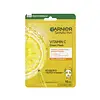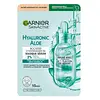What's inside
What's inside
 Key Ingredients
Key Ingredients

 Benefits
Benefits

 Concerns
Concerns

 Ingredients Side-by-side
Ingredients Side-by-side

Water
Skin ConditioningGlycerin
HumectantButylene Glycol
HumectantAmmonium Polyacryloyldimethyl Taurate
Emulsion StabilisingAscorbyl Glucoside
AntioxidantBiosaccharide Gum-1
HumectantCitric Acid
BufferingCitronellol
PerfumingCitrus Limon Fruit Extract
MaskingDisodium EDTA
Hydrogenated Lecithin
EmulsifyingHydroxyacetophenone
AntioxidantIsopropyl Lauroyl Sarcosinate
Skin ConditioningLinalool
PerfumingMannose
HumectantNiacinamide
SmoothingPhenoxyethanol
PreservativePhenylethyl Resorcinol
AntioxidantSodium Hyaluronate
HumectantXanthan Gum
EmulsifyingParfum
MaskingWater, Glycerin, Butylene Glycol, Ammonium Polyacryloyldimethyl Taurate, Ascorbyl Glucoside, Biosaccharide Gum-1, Citric Acid, Citronellol, Citrus Limon Fruit Extract, Disodium EDTA, Hydrogenated Lecithin, Hydroxyacetophenone, Isopropyl Lauroyl Sarcosinate, Linalool, Mannose, Niacinamide, Phenoxyethanol, Phenylethyl Resorcinol, Sodium Hyaluronate, Xanthan Gum, Parfum
Water
Skin ConditioningPropylene Glycol
HumectantGlycerin
HumectantAlcohol
AntimicrobialAloe Barbadensis Leaf Juice Powder
Skin ConditioningCitric Acid
BufferingDipotassium Glycyrrhizate
HumectantGlyceryl Acrylate/Acrylic Acid Copolymer
HumectantHamamelis Virginiana Leaf Water
AstringentHydrogenated Starch Hydrolysate
HumectantHydroxyacetophenone
AntioxidantHydroxyethylcellulose
Emulsion StabilisingLimonene
PerfumingMannose
HumectantP-Anisic Acid
MaskingPEG-40 Hydrogenated Castor Oil
EmulsifyingPhenoxyethanol
PreservativePotassium Hydroxide
BufferingPotassium Sorbate
PreservativePvm/Ma Copolymer
Emulsion StabilisingSodium Benzoate
MaskingSodium Hyaluronate
HumectantSorbic Acid
PreservativeXanthan Gum
EmulsifyingParfum
MaskingWater, Propylene Glycol, Glycerin, Alcohol, Aloe Barbadensis Leaf Juice Powder, Citric Acid, Dipotassium Glycyrrhizate, Glyceryl Acrylate/Acrylic Acid Copolymer, Hamamelis Virginiana Leaf Water, Hydrogenated Starch Hydrolysate, Hydroxyacetophenone, Hydroxyethylcellulose, Limonene, Mannose, P-Anisic Acid, PEG-40 Hydrogenated Castor Oil, Phenoxyethanol, Potassium Hydroxide, Potassium Sorbate, Pvm/Ma Copolymer, Sodium Benzoate, Sodium Hyaluronate, Sorbic Acid, Xanthan Gum, Parfum
 Reviews
Reviews

Ingredients Explained
These ingredients are found in both products.
Ingredients higher up in an ingredient list are typically present in a larger amount.
Citric Acid is an alpha hydroxy acid (AHA) naturally found in citrus fruits like oranges, lemons, and limes.
Like other AHAs, citric acid can exfoliate skin by breaking down the bonds that hold dead skin cells together. This helps reveal smoother and brighter skin underneath.
However, this exfoliating effect only happens at high concentrations (20%) which can be hard to find in cosmetic products.
Due to this, citric acid is usually included in small amounts as a pH adjuster. This helps keep products slightly more acidic and compatible with skin's natural pH.
In skincare formulas, citric acid can:
While it can provide some skin benefits, research shows lactic acid and glycolic acid are generally more effective and less irritating exfoliants.
Most citric acid used in skincare today is made by fermenting sugars (usually from molasses). This synthetic version is identical to the natural citrus form but easier to stabilize and use in formulations.
Read more about some other popular AHA's here:
Learn more about Citric AcidGlycerin is already naturally found in your skin. It helps moisturize and protect your skin.
A study from 2016 found glycerin to be more effective as a humectant than AHAs and hyaluronic acid.
As a humectant, it helps the skin stay hydrated by pulling moisture to your skin. The low molecular weight of glycerin allows it to pull moisture into the deeper layers of your skin.
Hydrated skin improves your skin barrier; Your skin barrier helps protect against irritants and bacteria.
Glycerin has also been found to have antimicrobial and antiviral properties. Due to these properties, glycerin is often used in wound and burn treatments.
In cosmetics, glycerin is usually derived from plants such as soybean or palm. However, it can also be sourced from animals, such as tallow or animal fat.
This ingredient is organic, colorless, odorless, and non-toxic.
Glycerin is the name for this ingredient in American English. British English uses Glycerol/Glycerine.
Learn more about GlycerinHydroxyacetophenone is antioxidant with skin conditioning and soothing properties. It also boosts the efficiency of preservatives.
This ingredient is not irritating or sensitizing.
We don't have a description for Mannose yet.
Parfum is a catch-all term for an ingredient or more that is used to give a scent to products.
Also called "fragrance", this ingredient can be a blend of hundreds of chemicals or plant oils. This means every product with "fragrance" or "parfum" in the ingredients list is a different mixture.
For instance, Habanolide is a proprietary trade name for a specific aroma chemical. When used as a fragrance ingredient in cosmetics, most aroma chemicals fall under the broad labeling category of “FRAGRANCE” or “PARFUM” according to EU and US regulations.
The term 'parfum' or 'fragrance' is not regulated in many countries. In many cases, it is up to the brand to define this term.
For instance, many brands choose to label themselves as "fragrance-free" because they are not using synthetic fragrances. However, their products may still contain ingredients such as essential oils that are considered a fragrance by INCI standards.
One example is Calendula flower extract. Calendula is an essential oil that still imparts a scent or 'fragrance'.
Depending on the blend, the ingredients in the mixture can cause allergies and sensitivities on the skin. Some ingredients that are known EU allergens include linalool and citronellol.
Parfum can also be used to mask or cover an unpleasant scent.
The bottom line is: not all fragrances/parfum/ingredients are created equally. If you are worried about fragrances, we recommend taking a closer look at an ingredient. And of course, we always recommend speaking with a professional.
Learn more about ParfumPhenoxyethanol is a preservative that has germicide, antimicrobial, and aromatic properties. Studies show that phenoxyethanol can prevent microbial growth. By itself, it has a scent that is similar to that of a rose.
It's often used in formulations along with Caprylyl Glycol to preserve the shelf life of products.
Sodium Hyaluronate is hyaluronic acid's salt form. It is commonly derived from the sodium salt of hyaluronic acid.
Like hyaluronic acid, it is great at holding water and acts as a humectant. This makes it a great skin hydrating ingredient.
Sodium Hyaluronate is naturally occurring in our bodies and is mostly found in eye fluid and joints.
These are some other common types of Hyaluronic Acid:
Learn more about Sodium HyaluronateWater. It's the most common cosmetic ingredient of all. You'll usually see it at the top of ingredient lists, meaning that it makes up the largest part of the product.
So why is it so popular? Water most often acts as a solvent - this means that it helps dissolve other ingredients into the formulation.
You'll also recognize water as that liquid we all need to stay alive. If you see this, drink a glass of water. Stay hydrated!
Learn more about WaterXanthan gum is used as a stabilizer and thickener within cosmetic products. It helps give products a sticky, thick feeling - preventing them from being too runny.
On the technical side of things, xanthan gum is a polysaccharide - a combination consisting of multiple sugar molecules bonded together.
Xanthan gum is a pretty common and great ingredient. It is a natural, non-toxic, non-irritating ingredient that is also commonly used in food products.
Learn more about Xanthan Gum